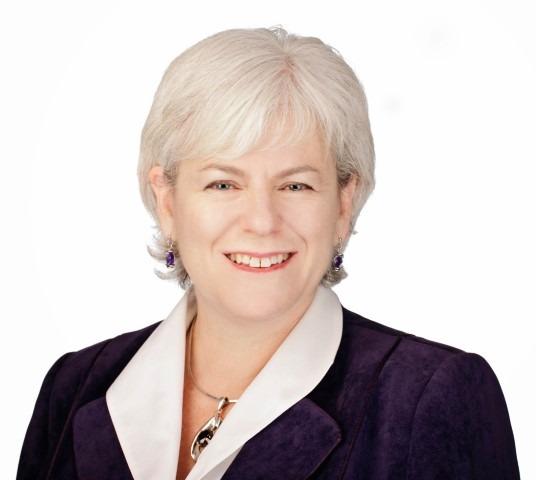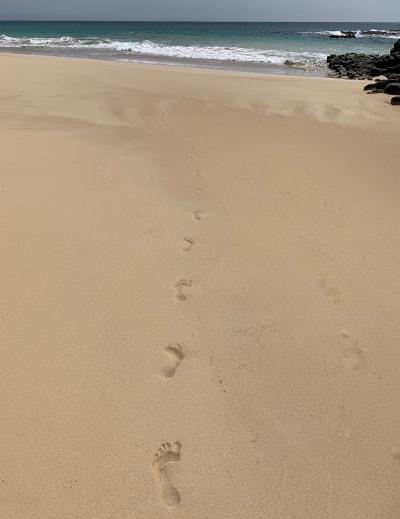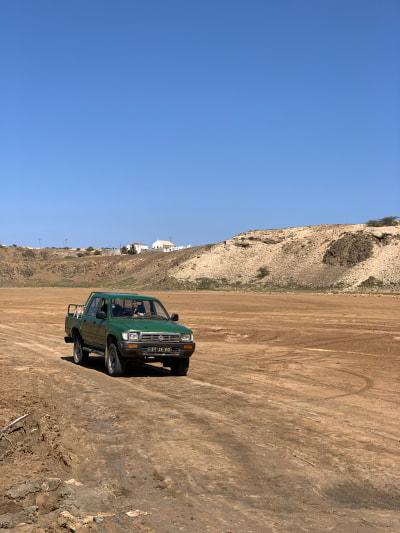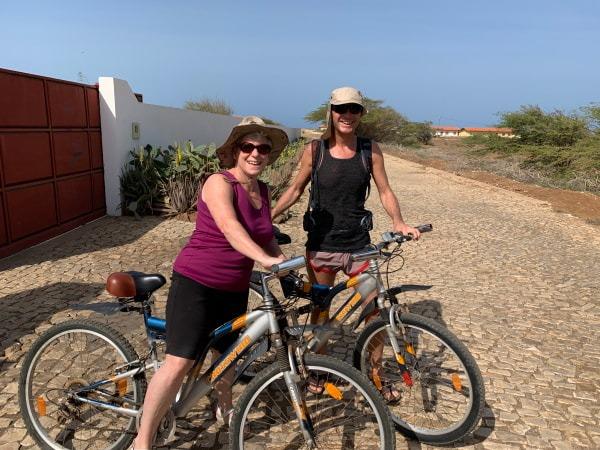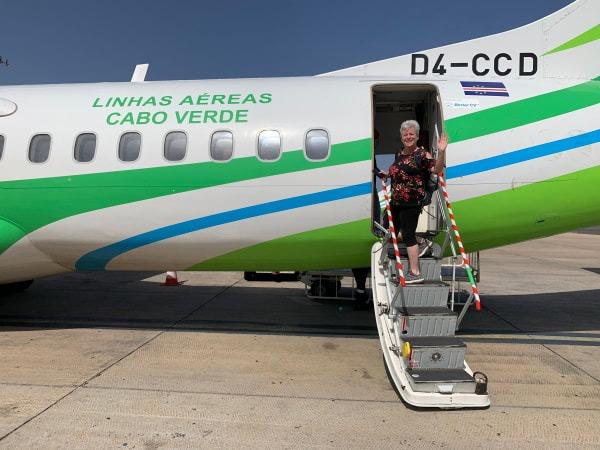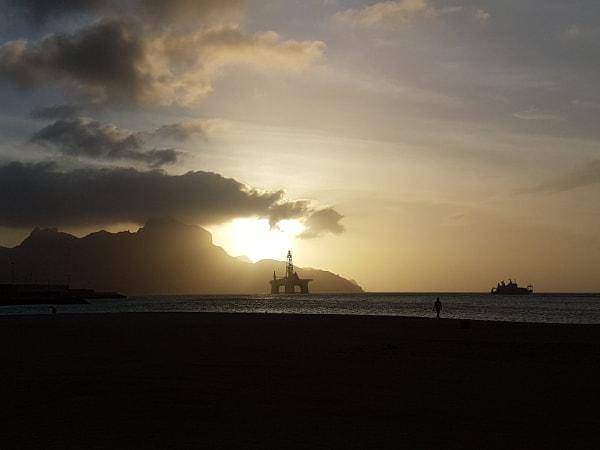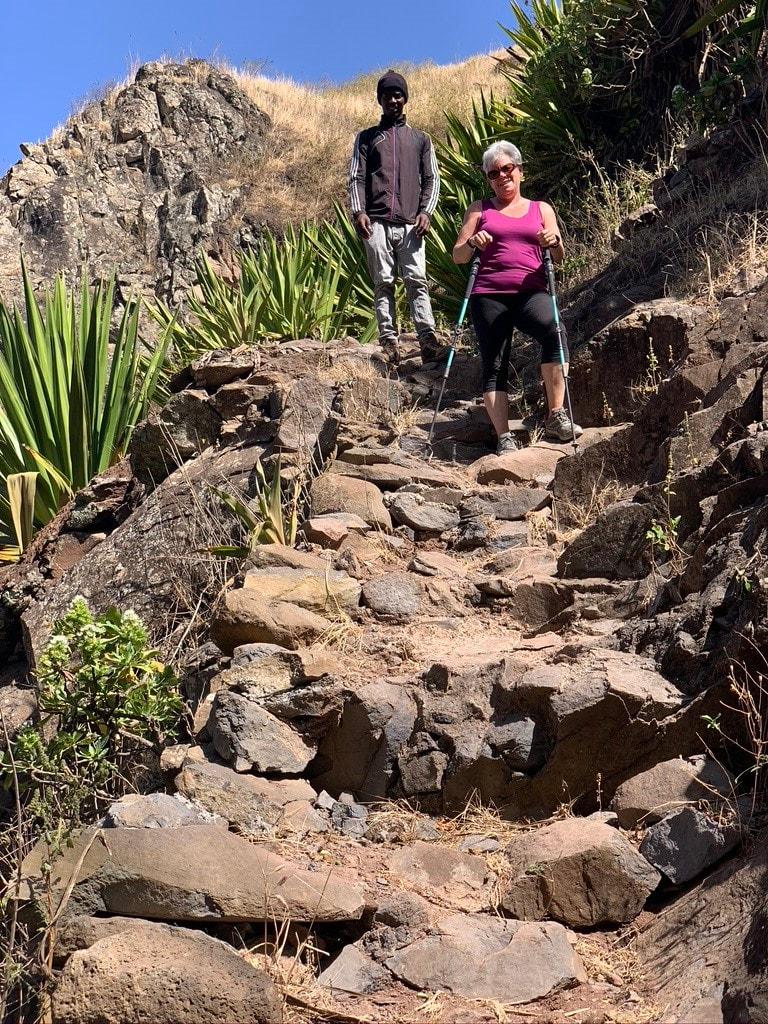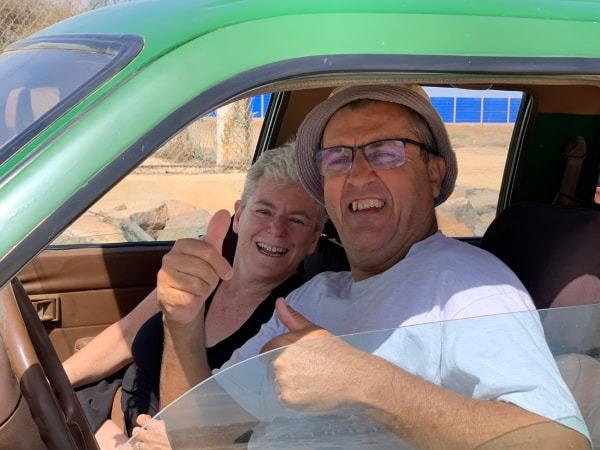
Today Christophe loaded us into his rattling old pickup truck for a tour of the 269 square km island of Maio. It is 24 km long by 16 km wide at its largest points. Much of the island looks like a moonscape: fields of rocks and a few barren hills as far as the eye can see. But when you get to the northeast side of the island suddenly there is some vegetation. Not thanks to more water being available, but because the wind is not as strong, so more can survive.
Almost all the trees on the island are Acacia trees. A few even manage to grow in the windswept areas. They provide shade and nourishment for the goats, and are topped regularly to provide wood that the locals turn into charcoal, bag and sell.
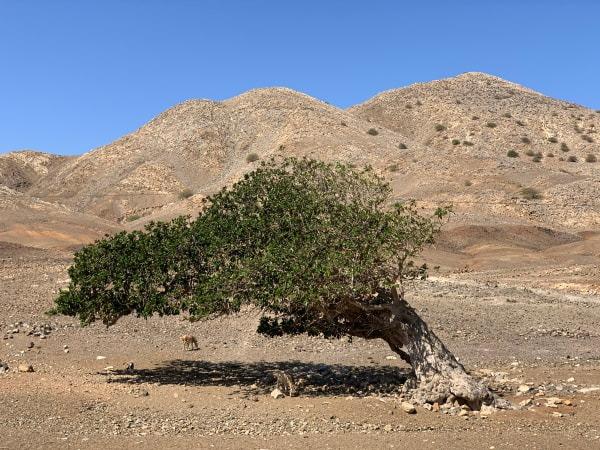
We passed many goats, a few cows, and pigs all roaming freely on the rocky fields, munching what scrub was available. One mama goat was providing shade to her newborn kid. The baby was able to stand, but just barely, and not for long. In another field a row of little piglets trotted after their mother. In villages you also see a chickens and roosters crossing the road (to get to the other side, of course).
The villages are pretty, with brightly coloured houses. The houses are normally long and narrow, with entrances on both ends. One end has the bedroom, the other has the kitchen and dining room. Many villages now have street lights. People will come out in the evening to cook or eat under the streetlights.
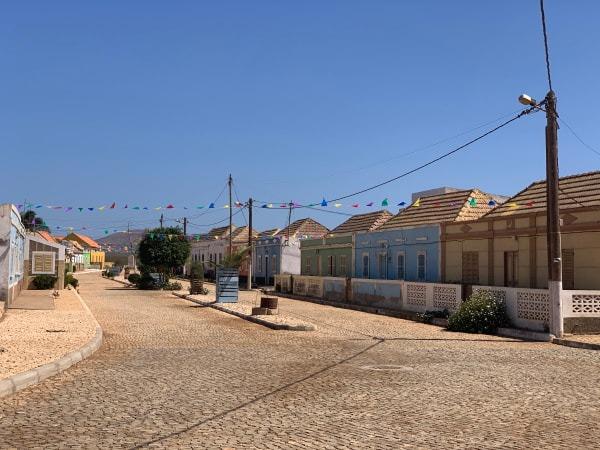
Either their houses do not have electricity or they choose not to use it. The average income is quite low so people economize where they can. (I’ve heard several different estimates of the average income. Most place it at about 120 – 140 euros/month (about CAD $175 – 200). The World Inequality Database https://wid.world/country/cabo-verde/ puts it much higher, at about 8,000 euros per year, or about USD$8,800). It is difficult to really know, because many people don’t have paying jobs. I can’t imagine that the food that gets sold on the fish wharf or at the side of the road gets reported.
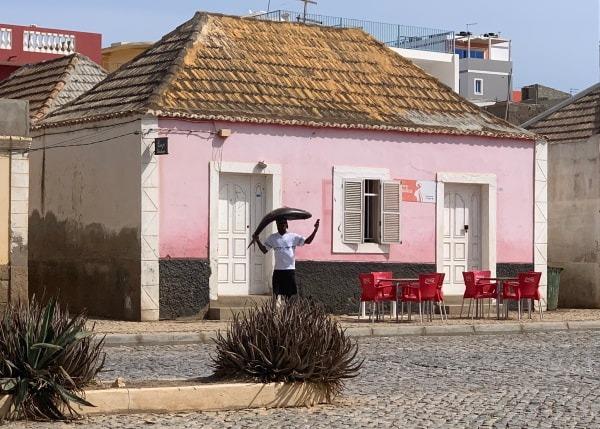
Rocks are everywhere. The roads are made with rocks. With the exception of one asphalt section provided by the EU, the roads are all neatly cobbled with white and black stones. Some of the roads are paved with white stones for each lane of traffic, with black stones marking a tidy line down the middle to separate them. Other roads reverse the colour scheme. It must be backbreaking work to build those roads, but they last forever. And if any potholes appear, it is easy to take out a few stones, add in more sand below, then pack the stones on top again and have it all pressed securely in place by the cars and trucks that roll over it. Repairing damage to asphalt is much more difficult and expensive.
Rock walls demarcating properties are ubiquitous. In one part of the island where rain can occasionally come gushing down from the mountain, the walls are built with openings in the bottom so the water can roll through. This hasn’t been an issue during these past four years, as there has been no rain. Rocks are also used to build circular pens that keep small animals safe until they are big enough to wander freely.
In areas near good beaches you will see fields with neat piles of rocks that have been cleaned up to make the land look more desirable to potential purchasers. Ultimately these fields will likely become condos for tourists.
A little political history
Cabo Verde became a single party communist country when it won its independence from Portugal in 1975. In 1991 it became a rare example of a country where a one-party communist state bowed to public pressure to allow genuine multiparty elections, without a violent uprising. The new government that took over started liberalizing the economy, but it had a long road ahead. Maio had stubbornly continued to support the communists even after the government had changed, so it missed out on the tourist infrastructure development that began in the 1990s. With the return to power of the communists in 2001, and their re-election in 2006, Maio has only recently started to receive any kind of government support towards developing tourism. It is the last of the islands to be getting a port, for example.
This colonial and then communist background helps explain why the tourist infrastructure is so under-developed. When no private companies were allowed, there was not much incentive to build resorts. Much of the development that we are seeing now is with the assistance of China. Most of the development has concentrated on the islands of Sal and Boa Vista, which have become all-inclusive tourist nightmares (unless you like that kind of thing). Islands like Maio are at risk of going that way, but I hope they don’t. There is a fine line between being tourist-friendly and becoming an overdeveloped beach resort that could be anywhere in the world. So if you want a quiet island with beautiful beaches, come to Maio soon, before it gets discovered!
Stunning beaches are everywhere. Personally, I think the one near where we are staying, near the village of Morro, is the best. It is a huge expanse of soft, perfect sand, with no seaweed or garbage, and almost no people. On one side of the wide, nearly flat beach is the ocean, on the other, a few gentle dunes overlook an enormous salt flat (about 5 km long by 1 km wide). As a result, there are few access points to the beach, which runs for about 12 km with no occupied housing on it. (There are a couple of failed housing developments near where we are staying. One of them was apparently thriving until the islanders discovered that the Frenchman who owned it was a pedophile and using local children to supply his and his clients’ demands. (He is now in jail in France.)
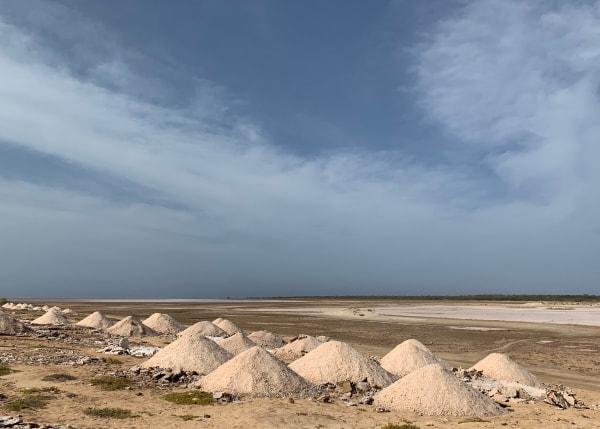
The people we’ve seen in the villages and on the roads have all seemed friendly (especially when we are with Christophe, who knows several of them). They wave and smile as you go by. In one village where we stopped for a drink this afternoon we spotted the only angry person we’ve seen, but he was stumbling drunk. The men he was acting aggressive towards gently guided him across the street, where he threw a box at no-one in particular, and then stripped off his shirt and stumbled over to a wall where he could sit down and calm himself. I guess that is one advantage of a small village – everyone knows the town drunk and how to handle him.
That said, crime can be a bit of a problem. Mostly property crime, particularly thefts from unoccupied houses. Christophe and Mona own another house in a nearby village. It is often rented but wasn’t this week. While it was empty somebody managed to tap into their water system and drain the entire tank.
Violence against foreigners can also happen, although on Maio it is quite rare, and typically happens when the foreigners have done stupid things like flash around their cash. Christophe was also concerned when he saw pairs of women sunbathing on isolated beaches. He worried for their safety. It is true that on both beaches where we saw pairs of women, their presence seemed to draw young male spectators, like vultures looking down on them from the cliffs surrounding the beaches.
On our way back towards home we picked up some of the people we saw walking along the hot dusty roads. Giving rides is normal behaviour here, given the lack of money and infrastructure. Another example of both the good and the bad of old world ways.
